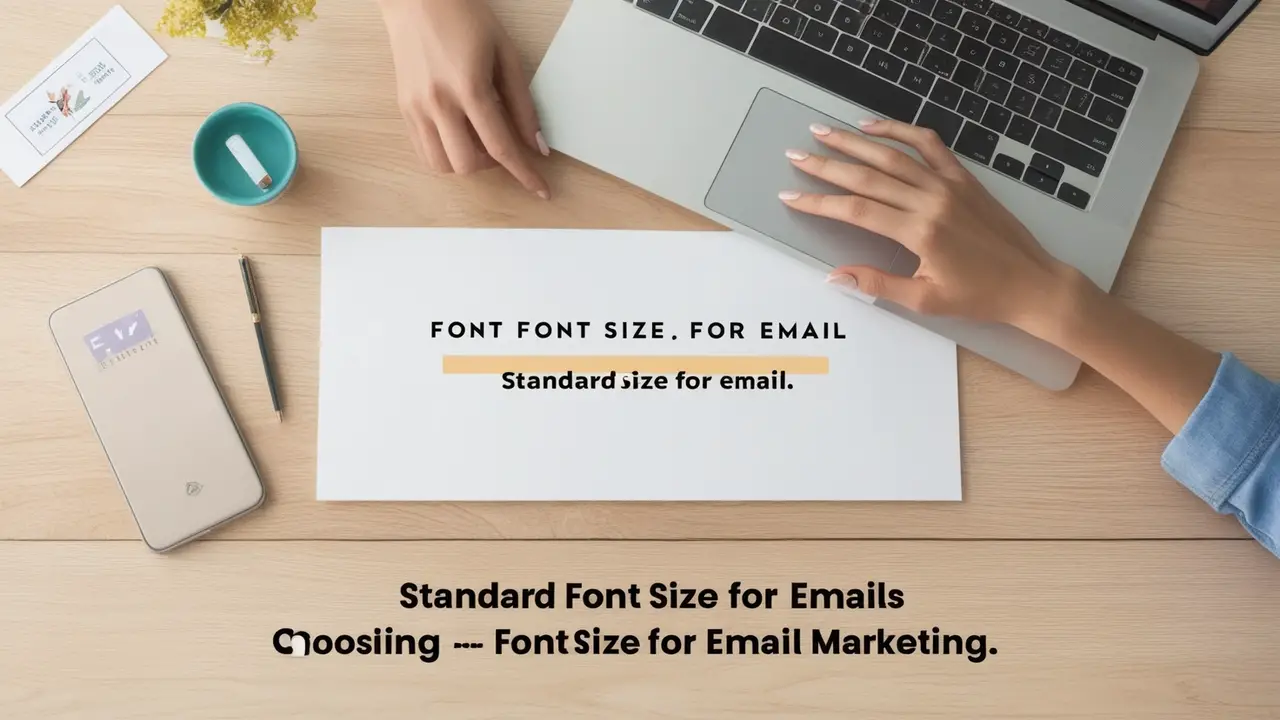Choosing the right font size for email is crucial in delivering an effective and professional message. Whether you’re crafting a business email, building an email marketing campaign, or designing a personal email signature, the font size and style can make or break the readability and aesthetic appeal of your emails.
From web-safe fonts to customized styles, this guide will walk you through everything you need to know about optimizing font size for email.

Font Size For Email – Guideline
Font size plays a crucial role in how your email content is perceived. A font that’s too small can hinder readability, while a font that’s too large can overwhelm the layout. Finding the right balance is essential for effective email design.
In email marketing, the choice of font size and style directly affects your campaign’s success. Since emails are typically skimmed quickly, readability is vital. Additionally, using a consistent email font across different devices and platforms, like Apple Mail and Gmail, ensures a smooth reading experience for all users.
Standard Font Size For Emails

The general recommendation for the default font size in em ail body content ranges between 12 to 14 points. This range strikes a balance between readability and preserving space for more content. It works well with most web safe fonts, ensuring consistent display across major email clients like Apple Mail, Outlook, and Gmail.
For headlines or titles, a larger font size of 18 to 22 points is generally recommended to create a clear visual hierarchy. Using larger font sizes for headings draws the reader’s attention to key sections and makes emails easier to skim.
Font Size In Email Signatures
Your email signature should also maintain readability, but it should be slightly smaller than the main body text to keep the overall design clean and compact. A font size between 10 to 12 points is ideal for signatures. When selecting an email signature font, stick to email safe fonts like Arial, Georgia, or Tahoma to ensure proper rendering across various devices and platforms.
Choosing The Right Font Size For Email Marketing
When crafting an email marketing campaign, readability and aesthetics should always be a priority. Since emails are often opened on mobile devices, using web safe fonts ensures that the text displays correctly. Pairing the right font style with an optimal font size can improve user engagement and click-through rates.
For email marketing messages, the default font size for body text should be around 14 points. This is large enough to be readable but compact enough to allow for more content in a single view. Titles and headings should use larger fonts to distinguish them from the body, while CTAs (Calls-to-Action) should be bold and prominent.
Best Fonts For Emails
The best font for email depends on your audience and the nature of your communication. Some of the most commonly used web fonts and email safe fonts include:
- Arial (Sans-serif, web-safe)
- Helvetica (Sans-serif, modern look)
- Georgia (Serif, classic style)
- Verdana (Sans-serif, highly readable)
Using a web safe font ensures that your email client renders the text properly. If you choose a custom font like those available in Google Fonts, be sure to include a fallback font in your font stack to ensure that, in case the custom font doesn’t load, a default font is used.
Using Decorative And Script Fonts
While decorative fonts or script fonts may add a unique visual element, they should be used sparingly. Fancy fonts can harm readability and appear unprofessional in a business email or marketing campaign. If you use a decorative font, make sure it’s for titles or short text, and always include a fallback font to maintain legibility.
Font Size For Email Newsletters
In an email newsletter, where you may be dealing with a large amount of text, readability is crucial. A font size of 12 to 14 points is generally best for the body text, while headings should range between 18 to 22 points. For CTAs, a bold font with a larger font size ensures that readers don’t miss key action prompts.
Conclusion
Choosing the right font size for email is essential for improving readability, engagement, and the overall effectiveness of your email marketing campaigns. Always consider using web-safe fonts and optimal sizes and testing your email design to ensure that your message is clear and professional across all devices.
Whether you’re crafting a business email, building an email newsletter, or designing an email signature, the right font size and style can make a significant impact.
FAQs
1.What Is The Best Font Size For Email Body Text?
The recommended font size for email body text is between 12 to 14 points for optimal readability.
2.Which Fonts Are Considered Email-Safe?
Email-safe fonts include Arial, Helvetica, Georgia, Tahoma, Times New Roman, and Verdana.
3.What Font Size Should Be Used For An Email Signature?
A font size of 10 to 12 points is ideal for an email signature.
4.Can I Use Custom Fonts In Emails?
Yes, but ensure you have a fallback font like Arial or Helvetica to maintain readability in unsupported email clients.
5.What Is A Fallback Font In Email Design?
A fallback font is a standard font like Arial or Georgia used if the custom font fails to load in the email client.
